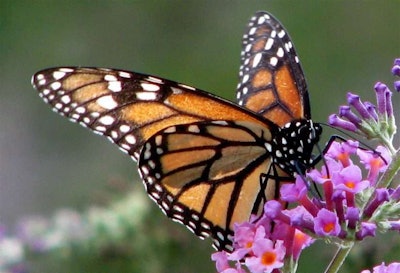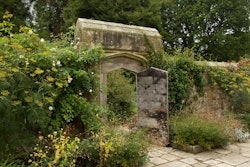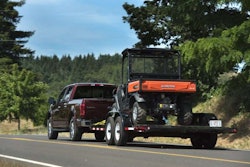 Photo: Audrey/Flickr
Photo: Audrey/FlickrWith the monarch butterfly migration soon beginning, landscapers are wondering what can be done to attract these beauties to their customer’s landscape.
Monarch butterflies are a vital player in the pollinator species, and are easy to spot with their black, white and orange wings, which have an average span of 3 ½ to 4 inches. These butterflies travel thousands of miles during their annual southern migration from southern parts of Canada and northern and central regions of Mexico and the United States.
While it’s not traditional to be the one planting weeds in the garden, having a healthy presence of milkweed can be one of the biggest attractants for these little guys.
Recently, Ray Durr received recognition from the National Wildlife Federation after creating the perfect habitat for monarch butterflies. In January, Durr called Ryan Zimmerman of D&D Lawn Service in Randolph, Wisconsin, for help in this endeavor.
According to Durr, monarchs will only lay their eggs on milkweed, therefore it is necessary to have it present in the garden if attracting butterflies is the goal.
The habitat provided all the essential elements of a monarch habitat and included water, food, places to raise their young and shelter. Durr’s garden features more than 200 plants, 20 varieties of milkweed and two bird baths.
“At least 10 percent of the flowers need to be blooming now,” Durr told the Daily Citizen. “The migration north is happening right now.”
The final 50 percent of the plants will begin blooming in late August and early fall, and another 40 percent begin blooming by mid-summer. In his garden, Durr said he used 80 percent native plants, and plants and seeds used were not genetically modified.
“Not only did we meet the requirements, but we made it look good,” Zimmerman told the Daily Citizen. “This is definitely one of my favorite projects.”
Zimmerman has worked with D&D Lawn Service since 2005 and has owned the company since 2011; he credits his brother Brandon’s work, as well as the rest of his crew, for getting Durr’s vision of this monarch habitat ready in time for the butterfly migration.
Along with an array of native plant life and milkweed, the garden also features a bench, pergola, a water feature made of basalt, a muddling pond, trees and several planting beds. To get the needed amount of salt and nutrients, butterflies, especially the males, need access to the mud. Milkweed was set aside in a separate planting bed in Durr’s garden.
“Try telling a landscaper you want a mud hole,” Durr told the Daily Citizen. “It has alliums and zinnias — everything from A to Z.”
To learn more about plants that attract butterflies, click here.










